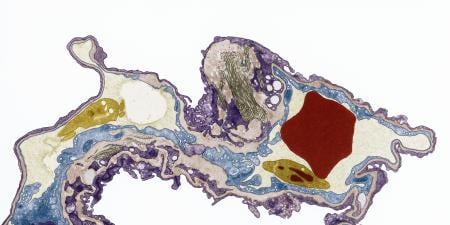Over my 30-year career, I have delivered both outpatient and inpatient care—always in an academic setting. For the past 8 years, however, I have restricted my clinical work to inpatient attending as a hospitalist. The role has prompted me to be cautious about how my interaction with patients impacts their satisfaction with the health care system, their outpatient physician, and me. To my knowledge, data on these concerns are unobtainable, so I need resort to conjecture in this article.
I use the term “satisfaction” with some trepidation. Classic patient-satisfaction questionnaires do not provide the granularity needed to explore these questions adequately. Imagine having had a physician for many years, with whom you developed a strong patient-doctor relationship. Your physician knows you and your medical history and understands your health-belief system. Now, for the first time you need hospitalization, but your physician (whom you adore) no longer delivers inpatient care, so the hospital assigns you a different physician. Having been a hospitalist for 8 years, I understand the stresses inherent in this new relationship. As a patient you might feel abandoned by your outpatient physician. “How dare he (she) not continue my care when I am sick enough for hospitalization?” You might rail at the health care system or the hospital for the absence of physician choice—after all, we can blame the system (or lack thereof) for insisting on this discontinuity of care. Finally, you might direct your anger at me since I am your hospitalist.
I have heard all these concerns expressed in conversations with friends and listened to tales of horrible hospitalists with lousy bedside manners. I have heard pain in the voices of relatives who are angry that the physician they chose and trusted did not come to the hospital. Hospitalist work occurs in a field with many emotional land mines. Patients are vulnerable because of their illness, and we have to develop relationships with them quickly to overcome the lack of a history together.
Parenthetically, this critique is not unique to hospitalists. Too often my hospital patients ask whether I am accepting new patients. They are not satisfied with their primary care physician and believe that I would be better. They are disappointed when I tell them I no longer see outpatients.
There is no denying that the arrangement of predominantly outpatient physicians and hospitalists has added stress to the patient-doctor relationship. The obstacles are surmountable, however, when hospitalists practice with a full understanding of the patient perspective.
Patient-doctor interactions benefit when physicians listen carefully. When meeting new patients, we should take extra time to learn about them—who is this patient, what is his or her belief system, and what are his or her expectations? We should sit down, relax, conduct our initial (and daily) interviews in an attentive fashion; we should allow patients to tell their stories without interruptions, and remember that our conversation is about the patient and the patient's problems.
How we support colleagues who treat our patients when they are not hospitalized is also critical. Patients often ask (either directly or indirectly) about the quality of their outpatient care, and our answers must be careful, honest, and have the patient's best interest in mind.
Many new hospitalists have the disadvantage of coming to hospital medicine directly from residency. While residency prepares them with the scientific knowledge they need to deliver competent patient care, it too often neglects patient-interaction skills. Outpatient practice represents a wonderful training ground for developing patient-relationship skills. I worry that new hospitalists don't develop these skills. They are often torn among many tasks, admitting new patients from the emergency department and discharging patients promptly. In this environment, patients desire their time and comfort. The system can push us toward inadequate patient attention. The best hospitalist groups limit their patient census to a number that allows their physicians to deliver the highest-quality bedside attention.
Hospitalists have a great responsibility in health care delivery. They attend patients who are emotionally vulnerable and shepherd them through the mechanical beast that our hospitals can become. Excellent hospitalists can help patients greatly with comforting words and body language, such as explaining each day's plans and test results—efforts that build the patient-doctor relationship. These relationships can quickly become intense and require much skill.
With its complexity and speed, hospital medicine poses great dangers and great opportunities. Properly trained hospitalists can help patients clinically and emotionally. We must learn to impart and evaluate these skills in order to secure the best hospital care for our patients.



